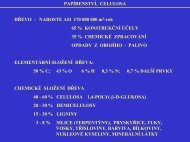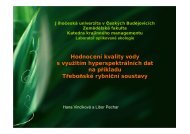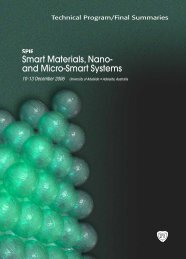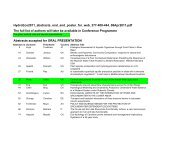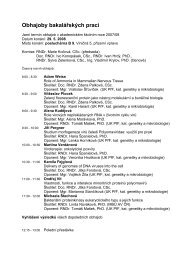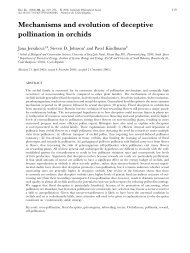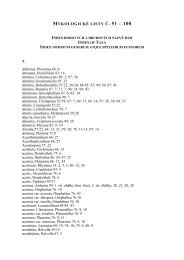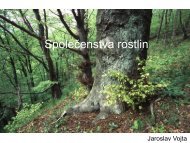Spatial distribution of phytoplankton in the eastern part of the North ...
Spatial distribution of phytoplankton in the eastern part of the North ...
Spatial distribution of phytoplankton in the eastern part of the North ...
- No tags were found...
Create successful ePaper yourself
Turn your PDF publications into a flip-book with our unique Google optimized e-Paper software.
achromaticum has previously been found by e. g. DODGE (1982) from British Isles and byTRIGUEROS et al. (2000) <strong>in</strong> <strong>the</strong> estuary <strong>of</strong> Urdaibai <strong>in</strong> nor<strong>the</strong>rn Spa<strong>in</strong>. It seems that this species isable to tolerate wide range <strong>of</strong> sal<strong>in</strong>ity <strong>in</strong> mar<strong>in</strong>e and brackish waters. The species found ma<strong>in</strong>ly at<strong>the</strong> oceanic end <strong>of</strong> <strong>the</strong> transect were Protoceratium reticulatum, Protoperid<strong>in</strong>ium cerasus andProtoperid<strong>in</strong>ium pyriforme. M<strong>in</strong>uscula bipes, Pentapharsod<strong>in</strong>ium dalei, Protoperid<strong>in</strong>iumpellucidum and Zygabikod<strong>in</strong>ium lenticulatum were found at all stations <strong>of</strong> <strong>the</strong> transect, but <strong>the</strong>ircontribution to <strong>the</strong> total quantity <strong>of</strong> algae was ra<strong>the</strong>r low.The species <strong>of</strong> <strong>the</strong> genus Dictyocha (ma<strong>in</strong>ly <strong>the</strong> species D. speculum) showed a different spatial<strong>distribution</strong> along <strong>the</strong> transect. Contrary to diatoms and d<strong>in</strong><strong>of</strong>lagellates, <strong>the</strong>y were ma<strong>in</strong>ly found <strong>in</strong><strong>the</strong> middle <strong>part</strong> <strong>of</strong> <strong>the</strong> transect. Only <strong>the</strong> skeleton bear<strong>in</strong>g stadium was found <strong>in</strong> all samples,although this genus is able to form o<strong>the</strong>r stages, which don’t require silicate and <strong>the</strong>refore don’tcompete with diatoms for it.Three dist<strong>in</strong>ct groups <strong>of</strong> stations were found based on differences <strong>in</strong> species composition – threestations at each end <strong>of</strong> <strong>the</strong> transect, and two stations <strong>in</strong> <strong>the</strong> middle. Different algal speciesdom<strong>in</strong>ated <strong>in</strong> each group. <strong>Spatial</strong> differences <strong>of</strong> <strong>phytoplankton</strong> composition along <strong>the</strong> transect wassignificant <strong>in</strong> RDA analysis, show<strong>in</strong>g differences between coastal and oceanic species. REID et al.(1978), who <strong>in</strong>vestigated <strong>the</strong> spatial <strong>distribution</strong> <strong>of</strong> <strong>phytoplankton</strong> <strong>of</strong>California, published similar results. They found that <strong>the</strong> planktoncomposition at stations 100 km a<strong>part</strong> <strong>in</strong> <strong>the</strong> along shore direction wasmore similar that at stations hundreds <strong>of</strong> meters a<strong>part</strong> <strong>in</strong> <strong>the</strong> <strong>of</strong>fshoredirection.The dependence <strong>of</strong> depth, sal<strong>in</strong>ity, temperature and fluorescenceon <strong>the</strong> species composition was not proved. For illustration, <strong>the</strong> p-values from <strong>the</strong> results <strong>of</strong> RDA analyses are given <strong>in</strong> Tab. 6.environmentalvariablesp-valuescoast 0.001depth 0.18temperature 0.29sal<strong>in</strong>ity 0.41fluorescence 0.69Table 6. The results <strong>of</strong>Monte-Carlo permutationtests <strong>of</strong> all environmentalvariables.The <strong>in</strong>dividual species showed four types <strong>of</strong> <strong>distribution</strong> along <strong>the</strong> transect, as shown <strong>in</strong> Fig. 18(coastal, oceanic, with a maximum <strong>of</strong> abundance <strong>in</strong> <strong>the</strong> middle <strong>part</strong> <strong>of</strong> <strong>the</strong> transect, or moreabundant at both ends <strong>of</strong> <strong>the</strong> transect.). Most <strong>of</strong> <strong>the</strong> species occurred <strong>in</strong> ei<strong>the</strong>r <strong>the</strong> <strong>eastern</strong> or <strong>the</strong>western <strong>part</strong> <strong>of</strong> <strong>the</strong> transect, <strong>in</strong> coastal or open oceanic environment, respectively. With <strong>the</strong>exception <strong>of</strong> Skeletonema costatum, <strong>the</strong> ecological preferences <strong>of</strong> most o<strong>the</strong>r species correspondwith published data. A preference for coastal environment has previously been published for e. g.Cosc<strong>in</strong>odiscus wailesii (EDWARDS & JOHNS 2002), Emiliania huxleyi (YANG et al. 2001), andThalassiosira angulata and T. nordenskioeldii (REIGSTAD et al. 2000). The genus Chaetoceros is,23




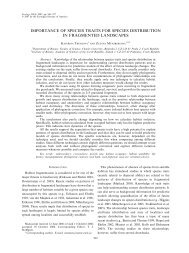
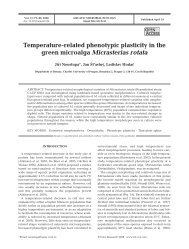
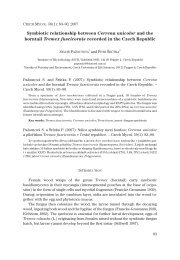
![[Cr(urea)6]Cl3](https://img.yumpu.com/47220263/1/184x260/crurea6cl3.jpg?quality=85)
